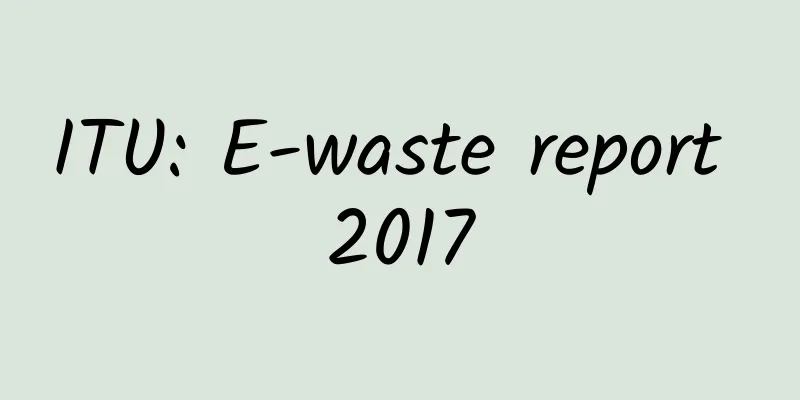ITU: E-waste report 2017

|
199IT original compilation The ITU released the "2017 E-waste Report", which showed that a total of 4,470 tons of e-waste was generated worldwide in 2016, which is equivalent to 4,500 Eiffel Towers. The amount of electronic waste is increasing worldwide, which poses a significant risk to the environment and human health through open burning, improper dumping and unsafe disposal practices. It also poses several challenges to sustainable development. The growth of e-waste is driven by the increasingly short application and replacement cycles of information and communication technologies. The information society is accelerating, characterized by an increasing number of users. Currently, only half of the world's population uses the Internet, many people have more than one device, and the replacement cycle of mobile phones, computers and other devices is getting shorter and shorter. Disposable income is growing in many developing countries, and the consumption of electronic products by the middle class is generating more e-waste. The amount of e-waste generated will increase significantly in the coming decades. In 2016, 6.1 kg of e-waste was generated every hour worldwide, compared to 5.8 kg/hour in 2014. It is estimated that by 2021, the total amount of e-waste worldwide will increase to 52.2 million tons, close to 6.8 tons/hour. Data shows that 8.9 million tons of electronic waste were recycled, equivalent to 20% of the total. Asia is the region that generates the most e-waste. In 2016, Asia generated 18.2 million tons of e-waste, followed by Europe (12.3 million tons), Americas (11.3 million tons), Africa (2.2 million tons) and Oceania (0.7 million tons). However, Oceania ranks first in terms of per capita e-waste production. Europe has the highest e-waste collection rate (35%). Only 41 countries in the world have official e-waste statistics. In countries without specific laws, e-waste is likely to be treated as general waste, which has a very high risk of being mishandled and releasing toxins. The good news is that 66% of the world's population lives in countries with e-waste management laws, a significant increase from 44% in 2014. In fact, e-waste is not worthless waste. In 2016, e-waste generated contained 55 billion euros worth of recyclable raw materials. The PDF version will be shared to the 199IT exchange group. 199IT thanks you for your support! |
>>: eMarketer: Second screen usage growth in 2018 mainly comes from smartphones
Recommend
Brown period after 8 days
The menstrual cycle is different for different pe...
Girls have itchy odor below
Poor diet and lifestyle can cause the human body ...
Can I wear a corset to sleep at night?
In order to reduce belly fat, many people choose ...
How to eat grasshopper vegetables? Benefits and functions of grasshopper vegetables
Grasshopper vegetable, also known as Amaranthus o...
Traditional Chinese medicine treatment and conditioning of functional constipation in the elderly
What is constipation and what are the causes of c...
The woman's Adam's apple is a little prominent
We know that one of the biggest differences betwe...
Please check out these 9 suggestions for patients with systemic lupus erythematosus!
Patients with systemic lupus erythematosus should...
What are the symptoms after implantation?
If a couple becomes pregnant successfully after s...
How to exercise and lose weight during menstruation?
The day is getting really colder and colder, and ...
Don’t think a woman’s big nose is ugly, it has a good meaning!
The nose is one of the five facial features and a...
Various pictures of women's vulva
Women's organs are very unique. Just like peo...
Is a small cervix good or bad?
Nowadays, women's health has become an issue ...
Seven ways to slim your calves
The fastest way to slim down your calves Although...
Reasons for less bleeding after abortion
Many people experience heavy bleeding after an ab...









